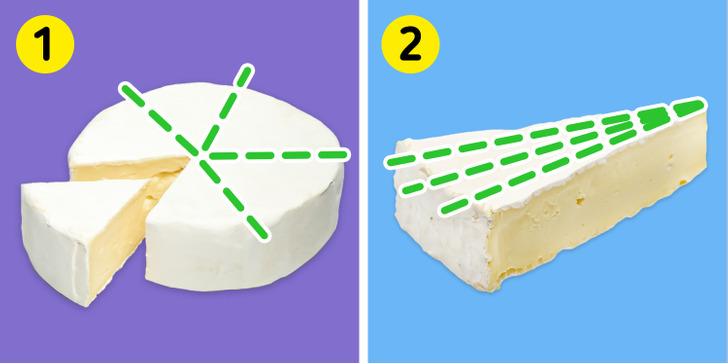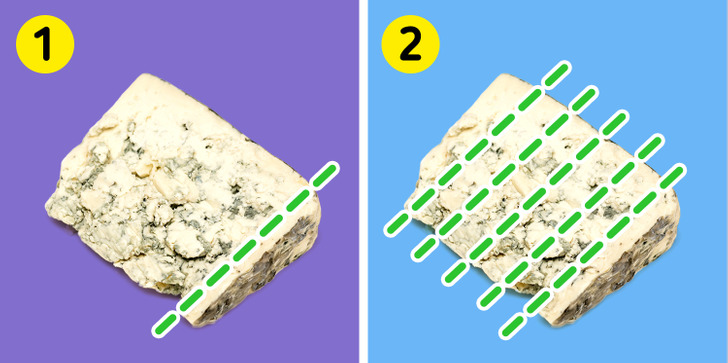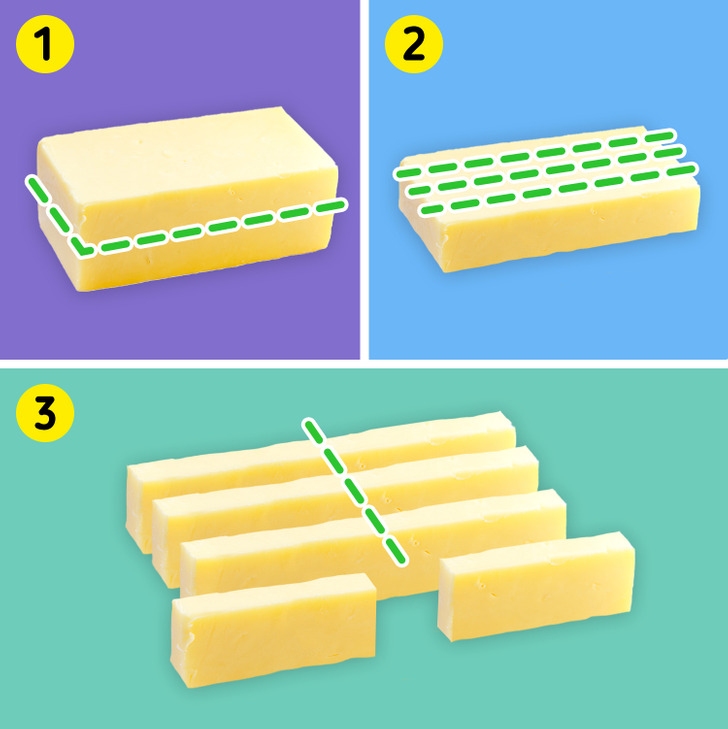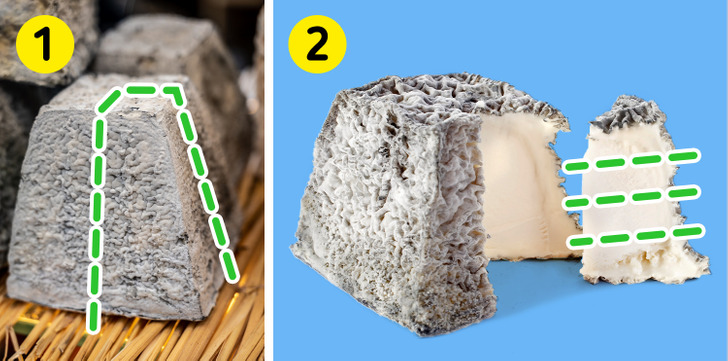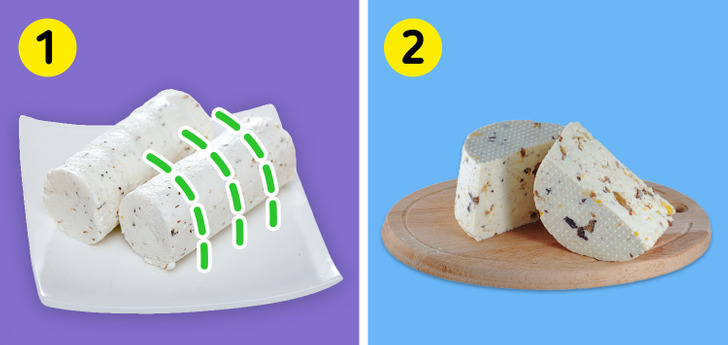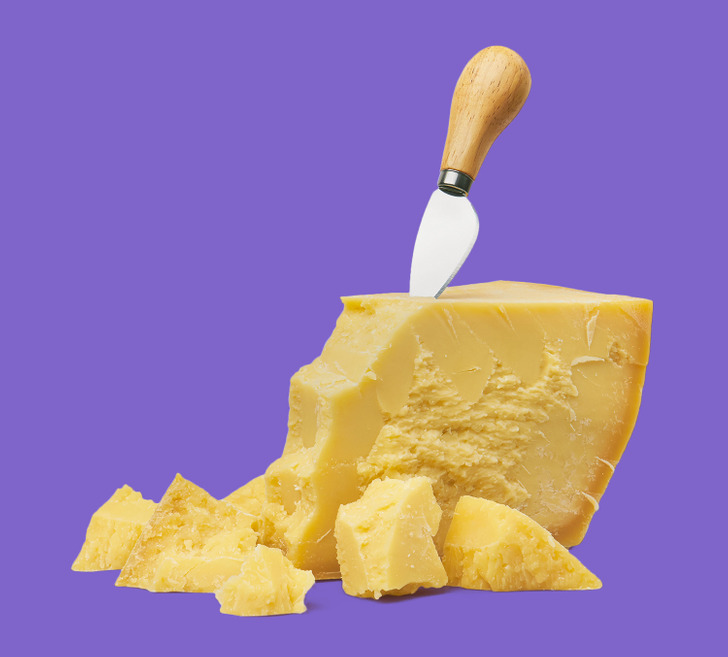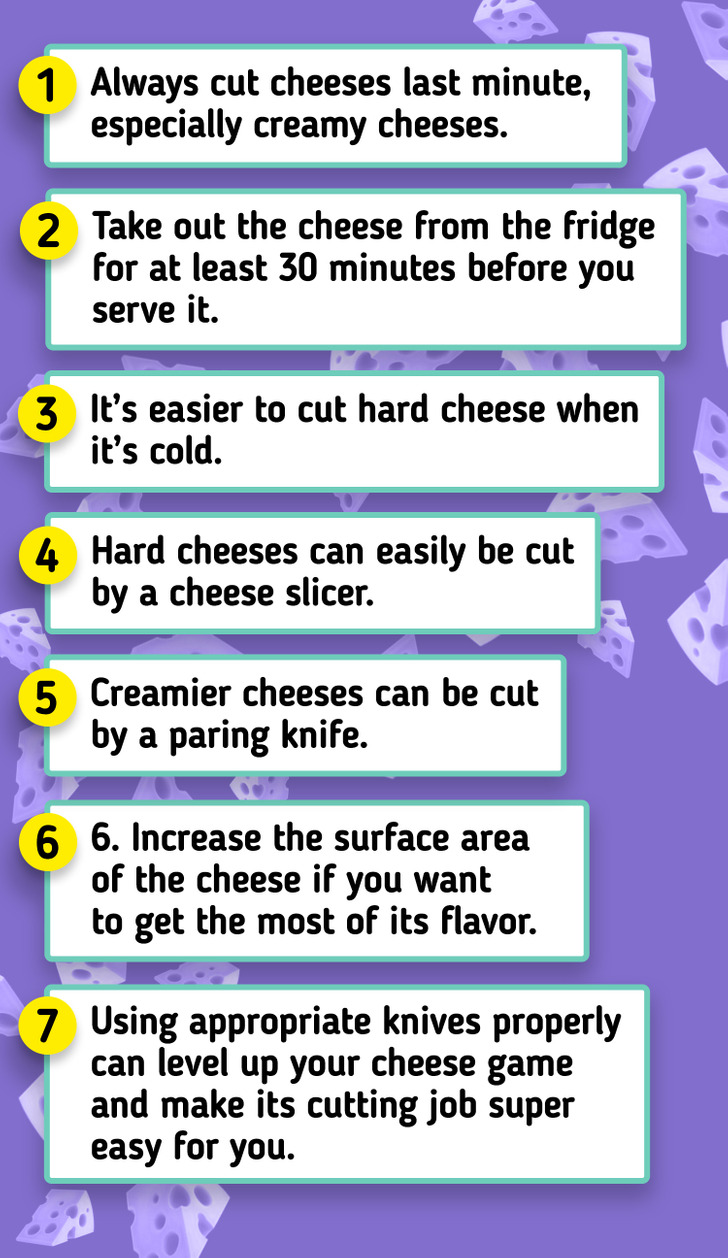How to Cut Cheese the Right Way
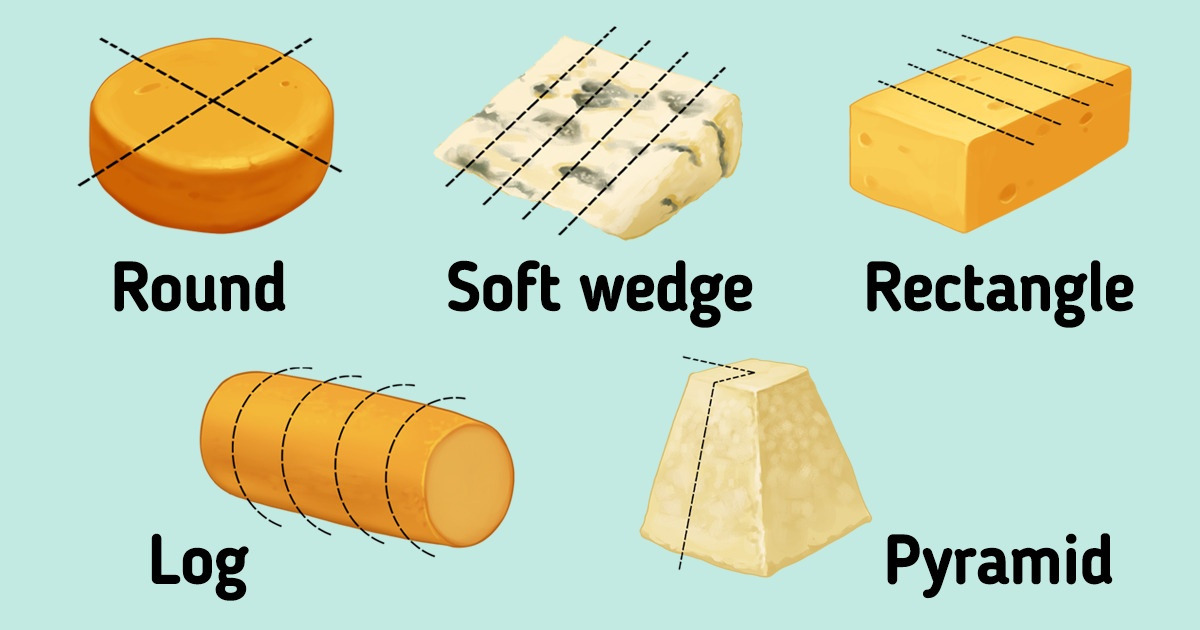
When creating a cheese charcuterie board, or even if you want to have the best-tasting cheese, it’s essential to know that there are many ways to cut and serve this yummy food. While some cheeses can come in the form of wheels and wedges, some depend on their shapes and textures to give out the best flavor. Let 5-Minute Crafts be your guide on how to cut many types of cheeses in the correct ways so that your journey in cheese exploration is the best.
1. Wheels and rounds
Begin by cutting even wedge slices from the center of the cheese to its outer edge. It’s just like slicing a cake. And then cut further, making even-sized wedges.
A simpler alternative is to cut a round in half and then make a half-moon slice to make sure that the slices look even. This technique is applicable for semi-firm or soft wheels of cheese.
Ideal cheese type: Camembert, Fourme d’Ambert, Edam, Brie
2. Soft wedge
This can be done with a cheese harp or a wire. All you need to do is place the harp where you want to slice the cheese and then push it down. This will create a smooth and even cut. This works particularly well for softer blue cheeses where you don’t want the blue mold being pulled by the knife. From the side of the wedge, cut a triangular-shaped rind with the help of the cutting tools mentioned above.
Keep cutting the triangular wedges with the help of the cheese harp. The wire is usually not sharp, so sometimes it helps when you hold the wedge in your hand and make the wire cuts.
Ideal cheese type: Roquefort, Chiriboga blue
3. Hard and semi-hard rectangles
This technique is ideal for firm blocks of cheese and is applicable to rind cheese, like Gruyere, as well as rindless cheese, like Pepper Jack.
Begin by cutting the block in a horizontal manner, as it will make the slicing easier for you. Next, cut it vertically along the rind piece. And for the second part, make slices across the cheese width.
Ideal cheese type: gouda, Gruyère, fontina, Double Gloucester, Pepper Jack
4. Pyramid
Cutting soft and pyramid-shaped cheeses is very similar to a cake cut. Here, you make large wedges, then they are further sliced into smaller triangles. It begins as if you’re cutting a small muffin or cake. Then make a vertical cut, starting from the top center and ending at the base. Then make one more vertical cut and exclude the tall edge from the wheel. Keep the small cut-out wedge to the side and make parallel slices for serving-size portions.
Ideal cheese types: Pouligny-Saint-Pierre, Cerney
5. Log
Log cheeses are usually soft goat cheeses. Here, you need to make a cut horizontally, then make small and thinly sliced coin-shaped rounds. This can be easily done by a cheese lyre or a wire cutter. You can also cut these rounds further into halves for a moon shape or in quarters, depending on your serving size. It is not recommended to use a regular knife here as it may mash the cheese right off the bat.
If the diameter of the log cheese is large, then you can cut it like a pie, just like the round cheeses in #1.
Ideal cheese types: chèvre, Sainte-Maure de Touraine
6. Crumbly block or wedge
To begin, place the large, flat side of the cheese wedge on a surface. Then hold the cheese firmly with one hand. Insert your knife in a way so that it’s perpendicular to the cutting board.
In other words, the knife must be vertically inserted with the pointed side down. Then wiggle the knife until a big crumble is removed from the wheel. Keep repeating this step on the edge of the cheese until you get the amount of crumbled cheese you desire.
Ideal cheese types: certain cheddars, Parmigiano Reggiano.
7. Alpine wedge cut
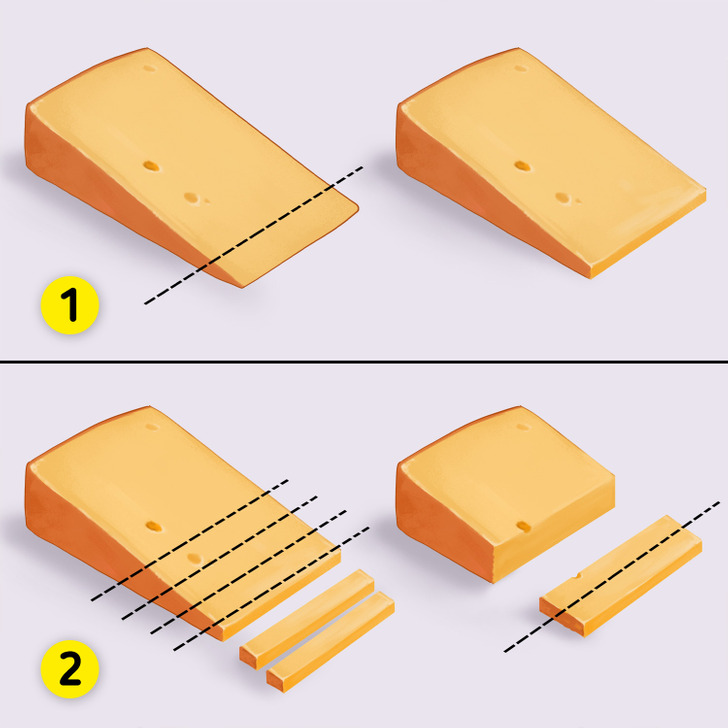
Alpine wheels are ideal when cheese is sliced into equally sized rectangular pieces. Begin by making a perpendicular cut at the smallest cheese edge and removing the triangular end piece by cutting it off. Then create perpendicular cuts closer to the rind, leaving rectangular cheese slices.
When the slices get bigger, you can cut them in half too. Every rectangular slice must bear a piece of rind on every end. This is the best way to serve the wedges of the firm and nutty Alpine wheels.
Ideal cheese type: challerhocker, Alp blossom
